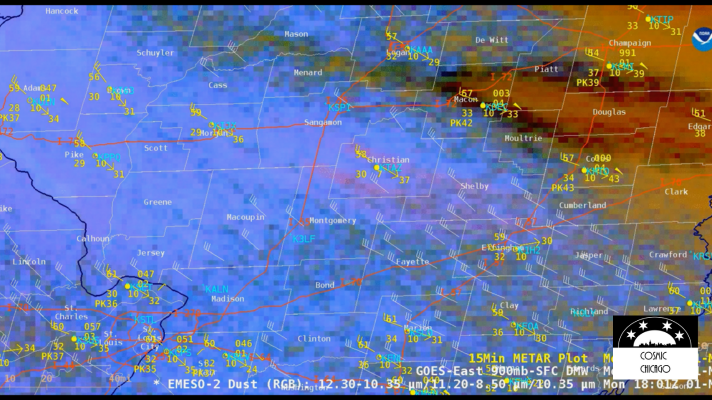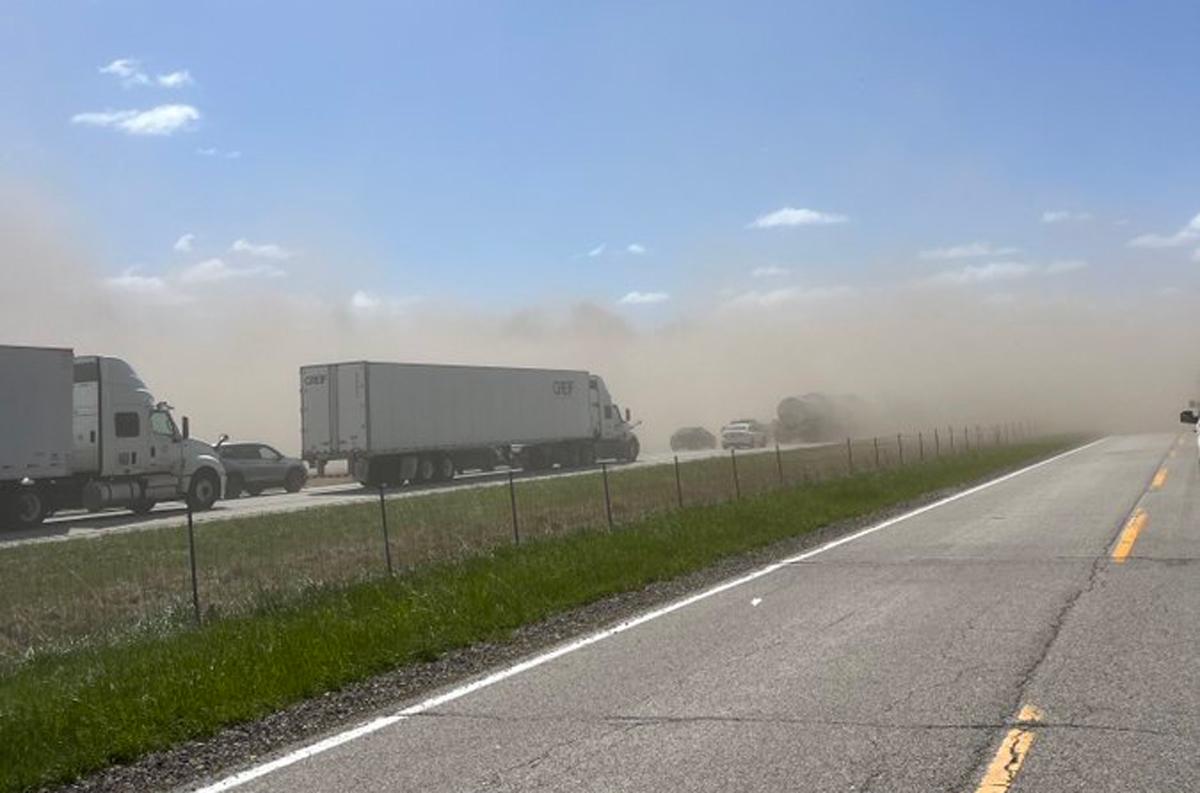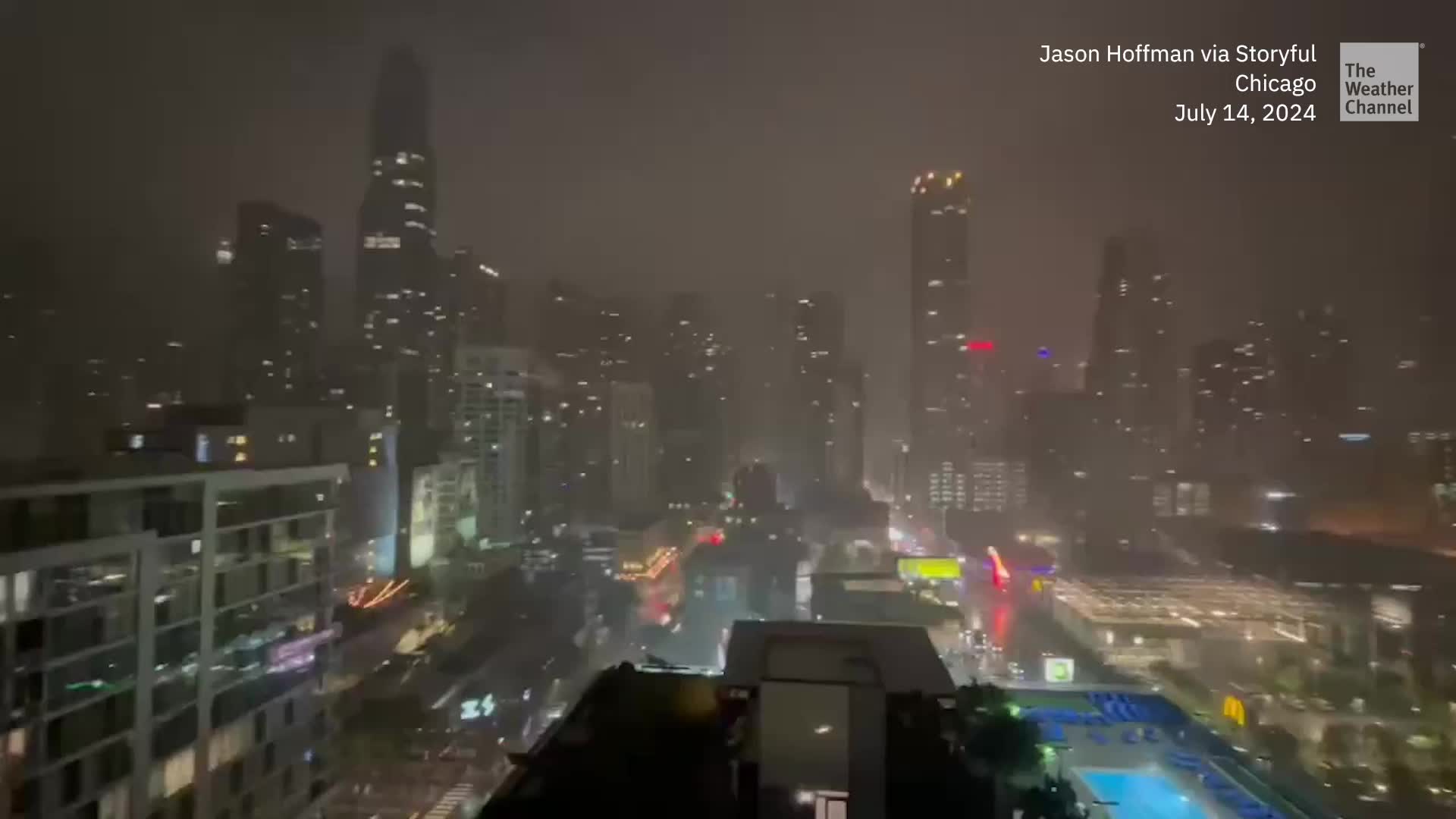Chicago Dust Storm Chaos: High Winds And Dry Soil Trigger Hazardous Travel Conditions

Chicago Dust Storm Chaos: High Winds And Dry Soil Trigger Hazardous Travel Conditions
A rare and severe dust storm swept across the Chicago metropolitan area today, creating near-zero visibility conditions and triggering widespread travel disruptions. High winds, coupled with abnormally dry soil, whipped up massive clouds of dust and debris, blanketing highways and significantly impacting air quality.
The dust storm, an unusual occurrence for the region, began early this morning and intensified throughout the day, prompting warnings from the National Weather Service (NWS) and emergency management agencies. The immediate aftermath has been a series of traffic accidents, airport delays, and heightened concerns regarding respiratory health for vulnerable populations.
Dust Storm Origins and Meteorological Factors
The current crisis stems from a combination of meteorological factors. According to the NWS, sustained winds of 40 to 50 mph, with gusts reaching up to 60 mph, were recorded across northern Illinois and Indiana. These strong winds are the primary driver behind the widespread dust clouds.
Furthermore, the region has experienced a prolonged period of drier-than-average conditions. The lack of recent rainfall has left topsoil exposed and susceptible to being lifted by the wind.
Travel Disruptions and Safety Concerns
The most immediate impact of the dust storm is on travel. Several major highways, including portions of Interstate 80 and Interstate 94, experienced significant slowdowns and temporary closures due to near-zero visibility.
Illinois State Police reported a surge in traffic accidents, many attributed to drivers being unable to see the vehicles ahead. Motorists are urged to avoid non-essential travel and, if driving is unavoidable, to reduce speed, turn on headlights, and maintain a safe following distance.
O'Hare International Airport and Midway International Airport also experienced delays and cancellations. Passengers are advised to check with their airlines for the latest flight information.
Health Advisories and Air Quality
The Illinois Environmental Protection Agency (IEPA) issued an air quality alert for the Chicago metropolitan area, warning of elevated levels of particulate matter (PM10). These particles, commonly found in dust, can irritate the respiratory system and exacerbate conditions like asthma and COPD.
Individuals with respiratory conditions, children, and the elderly are advised to limit their time outdoors. The Chicago Department of Public Health recommends that residents keep windows closed and use air purifiers if possible.
Expert Opinions and Long-Term Implications
Dr. Emily Carter, an atmospheric scientist at the University of Chicago, explained that while dust storms are rare in Chicago, they are becoming more frequent in other parts of the country due to climate change.
"Changes in precipitation patterns and land use practices can contribute to increased soil erosion and dust emissions," Dr. Carter stated. "This event serves as a reminder of the importance of sustainable land management and proactive measures to mitigate the impacts of climate change."
The long-term implications of this dust storm include potential impacts on agriculture, as the loss of topsoil can reduce soil fertility. It also raises concerns about the structural integrity of buildings and infrastructure due to the abrasive nature of the dust.
Looking Ahead: Mitigation and Preparedness
As the dust storm subsides, efforts will focus on cleanup and damage assessment. The Illinois Department of Transportation (IDOT) is deploying crews to clear debris from highways and assess road conditions.
Moving forward, experts emphasize the need for improved monitoring and forecasting systems to better predict and prepare for similar events. Implementing soil conservation practices, such as no-till farming and windbreaks, can help reduce soil erosion and minimize the risk of future dust storms.
Ultimately, addressing the underlying causes of soil erosion and climate change is crucial to building a more resilient future for the Chicago region and beyond.


















